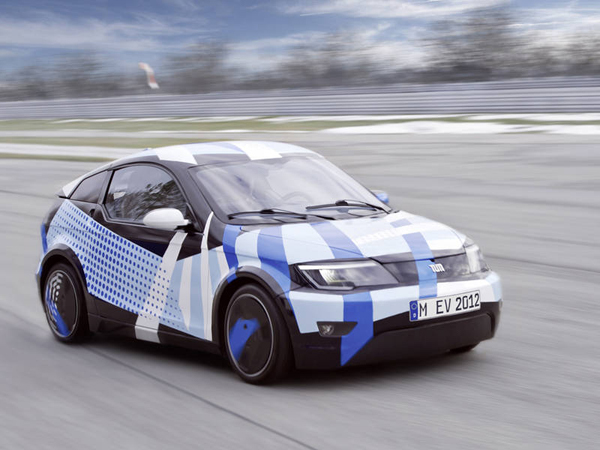There’s new news in Germany about an interesting electric car project under development by a consortium of European automotive industry engineers, government officials and academics that aims to make future EVs better in every way — cheaper, lighter and safer. Originally mentioned back in last May, the Visio.M, according to Green Car Congress, now looks to be a functional prototype vehicle undergoing initial tests.
Technische Universität München, which is who initially envisioned it, notes the participants in the project have chosen what is described as “a sturdy monocoque body, state-of-the-art carbon fiber materials and a lightweight engine and transmission system.” Those involved in making these types of decisions are a who’s who of Germany’s top name organizations, including the university, BMW, Daimler, E.ON, Siemens and Texas Instruments. It also comes with a hefty budget, being funded over two and a half years for 10.8 million euros, or $14.6 million American.

By making use of carbon-fiber-reinforced plastic in the passenger compartment, researchers are looking to drive down the costs normally associated with this safe and lightweight, but expensive, material for more regular Joe type electric cars. This type of composite is normally used during aircraft and luxury sports cars manufacturing. As part of its design, it will incorporate what’s described as “various dedicated active and passive features addressing the specific safety challenges of an ultra-compact electric car.” These include specially adapted seat belts.
Also under study right now is the Visio.M’s electric drive system. Looking again to keep weight down so as to lower costs and improve efficiency, what’s being developed is described as “an efficient and compact asynchronous electric engine” that is tied to a transmission system that will incorporate very light gears resting on hollow shafts. It is believed this would make the gears up to 15 percent lighter than conventional designs.
As we noted when we wrote about this previously, it is hoped at the end of this project that the future EV will have a curb weight below 882 pounds before the battery is added and a power output of at least 15 kW and 20 horsepower. That’s an extremely light vehicle (about 55 percent of the weight of a Smart ForTwo) and with the addition of an efficient battery, it will be interesting to see what sort of performance and range numbers engineers will be able to produce.